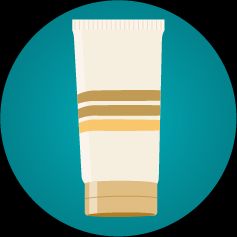Itchy feet in people with diabetes can be caused by poor circulation or damage to the nerve fibers in the legs and feet. High blood sugar contributes to both conditions.
Diabetes that isn’t effectively managed can result in high blood sugar (glucose) levels. Elevated blood sugar levels can cause several symptoms, such as:
- increased thirst
- hunger
- frequent urination
- blurry vision
You may also experience itching, which can be localized to the feet. Diabetes itch is often the result of poor circulation or diabetic neuropathy.
A 2021 study of 109 adults with diabetes type 2 found that
Itching might be common for some, and there are tips for managing it. Read on to learn about common causes of itchy feet and ways to calm your skin.
The goal of diabetes treatment is to manage your blood sugar and keep it within a moderate range.
Your blood sugar can increase for different reasons. These include skipping or forgetting to take your diabetes medication, eating too many grams of carbohydrates, experiencing chronic stress, physical inactivity, or having an infection or other illness.
High blood sugar is sometimes the underlying cause of itchy feet. This is because high blood sugar can lead to conditions that cause nerve damage and poor blood flow in the feet.
Diabetic peripheral neuropathy
Long-term high blood sugar can damage nerve fibers in your legs and feet. This is known as diabetic peripheral neuropathy. Symptoms can include:
- numbness or an inability to feel pain
- a tingling or burning sensation
- itchiness
Neuropathy also prompts the immune system to release cytokines, which are proteins that help regulate inflammatory responses. These proteins can irritate nerves and cause itching.
Peripheral arterial disease
Persistent high blood sugar also affects blood circulation in your legs and feet. This can lead to peripheral arterial disease, a type of circulatory disorder.
Itching occurs because poor circulation makes you prone to dry skin, which is when the natural oils in the feet dry up. Signs of dry feet include rough, flaky, and cracked skin.
Symptoms of peripheral arterial disease may include:
- pain in the legs during walking that gets better with rest
- muscle weakness in the legs or feet
- numbness or tingling in the legs or feet
- hair loss
- skin that feels cool to the touch
- cuts or sores on your legs or feet that heal slowly or don’t heal
- cold or numb toes
These conditions aren’t the only reasons for itchy feet. Diabetes may also put you at risk for other skin conditions, which also cause itching.
Bacterial infection
High blood sugar weakens the immune system, so there’s a chance of developing bacterial skin infections with diabetes.
A cut, blister, or another break in the skin allows bacteria to enter your body. This puts you at risk for itchy skin infections like impetigo and folliculitis.
A topical or oral antibiotic applied to the affected area can kill the bacteria and help your skin heal.
Fungal infection
Athlete’s foot is caused by candida, a yeast-like fungus that can develop in the moist folds of skin. A weak immune system also puts you at risk for these types of infections, which can cause itching and occur in between your toes.
Apply a topical antifungal cream to kill the fungus and stop the infection.
Necrobiosis lipoidica diabeticorum (NLD)
This inflammatory condition affects about
This condition may appear before, at the same time, or after diabetes symptoms start. But so far, researchers
Symptoms can include thickening blood vessels, as well as painful, itchy raised spots or pimples.
NLD can occur on one or both shins, but it may also develop on other parts of the leg. You don’t have to treat the condition unless you have symptoms. A topical steroid cream or steroid injection can stop inflammation and get rid of these spots and pimples.
Diabetic blisters
People with diabetic neuropathy are susceptible to diabetic blisters on their toes, feet, and other parts of their bodies. The cause is unknown, but blisters may be triggered by friction or a skin infection that develops when blood sugar is too high.
Some blisters don’t cause symptoms like pain, but other blisters may itch.
Diabetic blisters heal on their own and usually don’t require treatment. But, there’s a risk of an infection developing. Any blisters, callouses, or wounds should be carefully monitored for infection.
Eruptive xanthomatosis
Eruptive xanthomatosis is also the result of high blood sugar. It causes yellow, pea-like bumps on the skin that can itch.
These bumps tend to appear on the:
- feet
- legs
- arms
- back of the hands
Bumps disappear once blood sugar is under control.
Disseminated granuloma annulare
This skin condition causes ring or arch-like raised areas on different parts of the skin due to inflammation. They tend to appear on the:
- feet
- hands
- elbows
- ankles
The rash isn’t painful, but it can itch. It may disappear on its own within a few months, but you can apply a topical cortisone cream to help it go away sooner.
Certain practices can help keep your blood sugar within a safe range. These include:
- using a blood glucose monitor
- taking prescribed diabetes medication as directed, if using medication
- eating a balanced diet
- exercising
These all promote healthy nerves and blood circulation, which can stop or relieve itching.
Other tips to manage itching include:
- Apply moisturizer to your skin several times a day, especially after taking a shower or bath.
- Take fewer showers or baths, maybe every other day.
- Shower or bathe in lukewarm rather than hot water.
- Avoid skin products with harsh chemicals or fragrances.
- Avoid fabrics that irritate your skin.
- Choose hypoallergenic detergents.
- Try to avoid water staying within any folds of your skin, such as between the toes.
- Don’t apply lotion in between your toes.
You can also take practical steps to prevent itchy feet before the itching starts.
Prevention can start with managing your blood sugar levels, taking medication as prescribed, eating nutritious meals, and engaging in regular physical activity.
Other prevention tips include:
- Dry your feet completely after bathing or showering, and apply moisturizer to your skin.
- To reduce the risk of skin infections, avoid scratching your feet.
- Use a humidifier in your home, especially in the winter.
- Examine your feet daily for scratches and cuts. Clean and bandage wounds daily.
- Wear properly fitting shoes to avoid injury or blisters.
- Limit water exposure, and take shorter showers.
- Avoid harsh soaps, which can dry out feet. Use cleansing gels or creams instead.
Having itchy feet due to diabetes may be treatable at home with lifestyle changes, topical creams, and moisturizers.
Talk with a doctor if the itchiness doesn’t improve or worsens, or if your current plan for managing your blood sugar levels doesn’t seem to be working.
You may also want to see a doctor if you have symptoms of diabetic neuropathy or peripheral arterial disease.
If you have diabetes, don’t ignore itchy feet. This is sometimes a sign of long-term high blood sugar. If left untreated, there’s a risk of diabetes complications, including:
- nerve damage
- organ damage
- skin conditions
- amputation
If you have diabetes and experience itchy feet, set up an appointment with a doctor or endocrinologist.
You can talk with a dermatologist if high blood sugar isn’t the cause of your itchy feet.











